Dmitry Resnyansky
Dmitry Resnyansky
PhD Student
Dmitry is a PhD student at the Empathic Computing Lab with a diverse educational and professional background. He holds a Master of Design in Digital Media at the University of Adelaide studying 3D visualisation of infographics and narrative-based media, as well as Bachelor of Visual Communicaton at the University of South Australia with an Associate in Languages and Culture Studies, and has technical education experience in web-based and digital media technologies.
In addition to his research work at the ECL, he has wide-reaching experience in UX/UI and web design for the University of South Australia as well as in managing his own studio with a focus on UX design and brand marketing. He has a direct interest in both the technical and humanitarian aspects of Human Computer Interaction and how AR and VR technology affects specific target groups. His current research focuses on identifying the ways that AR -supported tangible user interfaces may be harnessed to support programming education for secondary and tertiary students through concretisation of abstract concepts and deepened learner engagement.
Projects
-
Tangible Augmented Reality for Learning Programming Learning
This project explores how tangible Augmented Reality (AR) can be used to teach computer programming. We have developed TARPLE, A Tangible Augmented Reality Programming Learning Environment, and are studying its efficacy for teaching text-based programming languages to novice learners. TARPLE uses physical blocks to represent programming functions and overlays virtual imagery on the blocks to show the programming code. Use can arrange the blocks by moving them with their hands, and see the AR content either through the Microsoft Hololens2 AR display, or a handheld tablet. This research project expands upon the broader question of educational AR as well as on the questions of tangible programming languages and tangible learning mediums. When supported by the embodied learning and natural interaction affordances of AR, physical objects may hold the key to developing fundamental knowledge of abstract, complex subjects for younger learners in particular. It may also serve as a powerful future tool in advancing early computational thinking skills in novices. Evaluation of such learning environments addresses the hypothesis that hybrid tangible AR mediums are able to support an extended learning taxonomy both within the classroom and without.
Publications
-
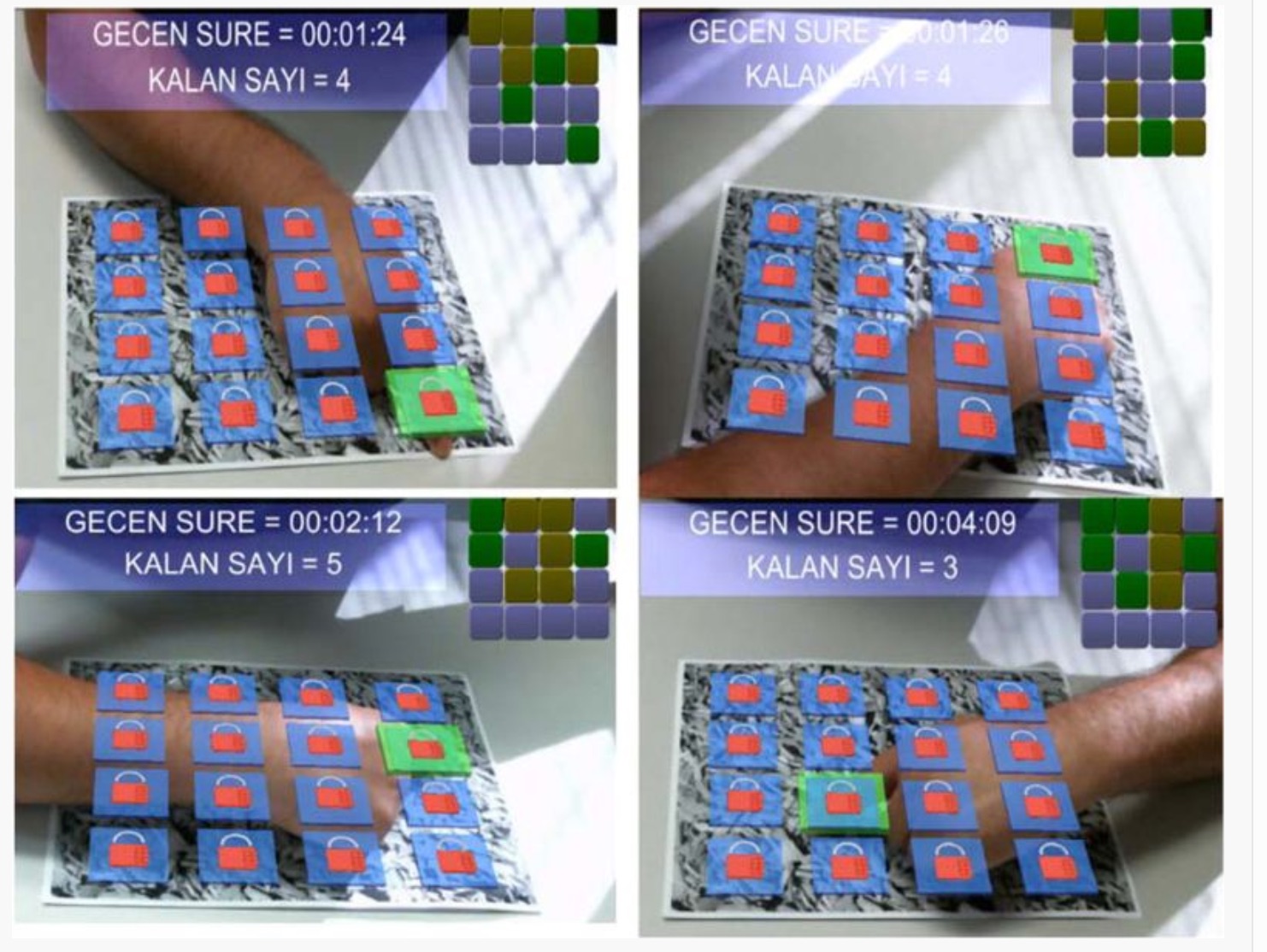
Applying the technology acceptance model to understand maths teachers’ perceptions towards an augmented reality tutoring system
Ibili, E., Resnyansky, D., & Billinghurst, M.Ibili, E., Resnyansky, D., & Billinghurst, M. (2019). Applying the technology acceptance model to understand maths teachers’ perceptions towards an augmented reality tutoring system. Education and Information Technologies, 1-23.
@article{ibili2019applying,
title={Applying the technology acceptance model to understand maths teachers’ perceptions towards an augmented reality tutoring system},
author={Ibili, Emin and Resnyansky, Dmitry and Billinghurst, Mark},
journal={Education and Information Technologies},
pages={1--23},
year={2019},
publisher={Springer}
}This paper examines mathematics teachers’ level of acceptance and intention to use the Augmented Reality Geometry Tutorial System (ARGTS), a mobile Augmented Reality (AR) application developed to enhance students’ 3D geometric thinking skills. ARGTS was shared with mathematics teachers, who were then surveyed using the Technology Acceptance Model (TAM) to understand their acceptance of the technology. We also examined the external variables of Anxiety, Social Norms and Satisfaction. The effect of the teacher’s gender, degree of graduate status and number of years of teaching experience on the subscales of the TAM model were examined. We found that the Perceived Ease of Use (PEU) had a direct effect on the Perceived Usefulness (PU) in accordance with the Technology Acceptance Model (TAM). Both variables together affect Satisfaction (SF), however PEU had no direct effect on Attitude (AT). In addition, while Social Norms (SN) had a direct effect on PU and PEU, there was no direct effect on Behavioural Intention (BI). Anxiety (ANX) had a direct effect on PEU, but no effect on PU and SF. While there was a direct effect of SF on PEU, no direct effect was found on BI. We explain how the results of this study could help improve the understanding of AR acceptance by teachers and provide important guidelines for AR researchers, developers and practitioners. -
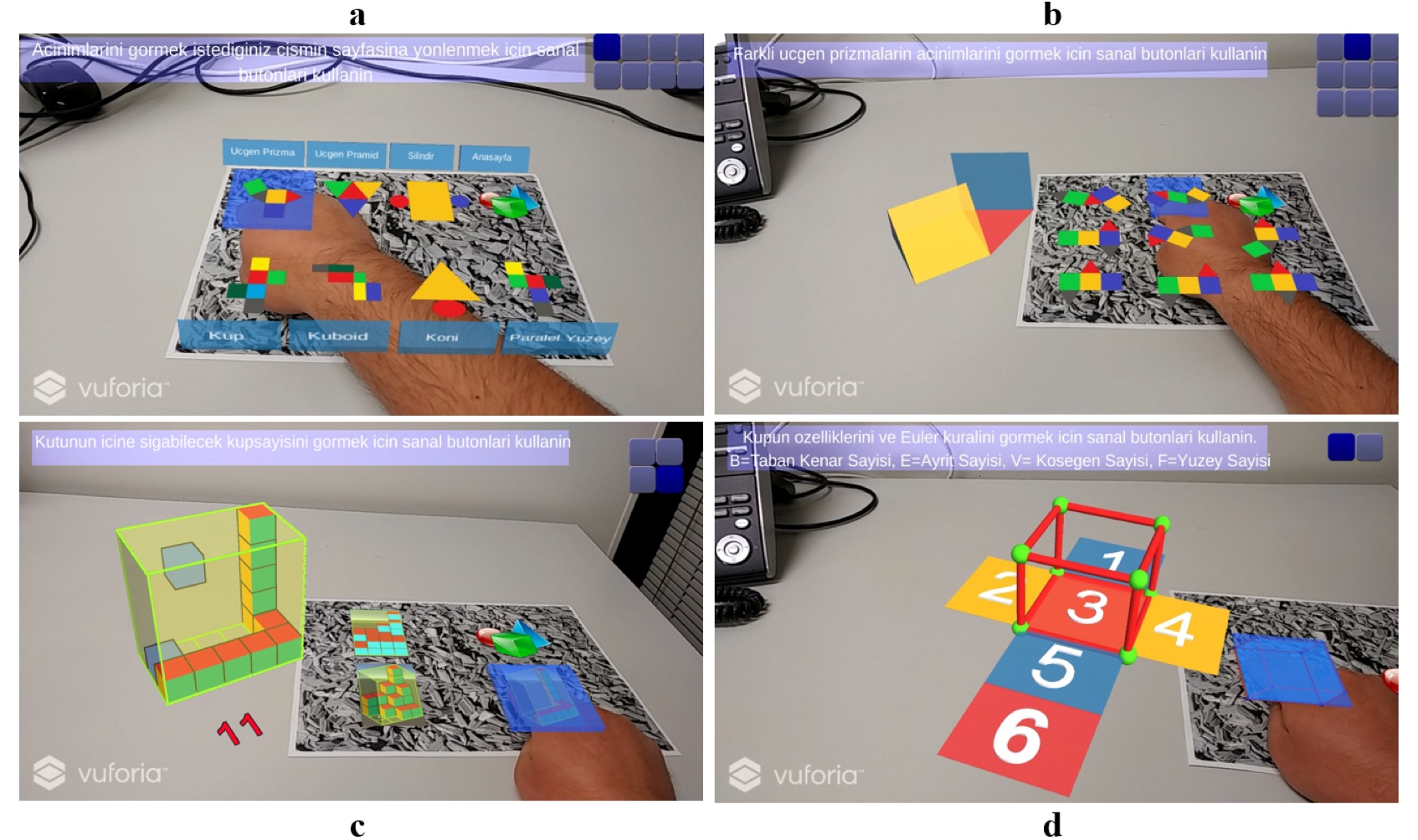
An assessment of geometry teaching supported with augmented reality teaching materials to enhance students’ 3D geometry thinking skills
İbili, E., Çat, M., Resnyansky, D., Şahin, S., & Billinghurst, M.İbili, E., Çat, M., Resnyansky, D., Şahin, S., & Billinghurst, M. (2019). An assessment of geometry teaching supported with augmented reality teaching materials to enhance students’ 3D geometry thinking skills. International Journal of Mathematical Education in Science and Technology, 1-23.
@article{ibili2019assessment,
title={An assessment of geometry teaching supported with augmented reality teaching materials to enhance students’ 3D geometry thinking skills},
author={{\.I}bili, Emin and {\c{C}}at, Mevl{\"u}t and Resnyansky, Dmitry and {\c{S}}ahin, Sami and Billinghurst, Mark},
journal={International Journal of Mathematical Education in Science and Technology},
pages={1--23},
year={2019},
publisher={Taylor \& Francis}
}The aim of this research was to examine the effect of Augmented Reality (AR) supported geometry teaching on students’ 3D thinking skills. This research consisted of 3 steps: (1) developing a 3D thinking ability scale, (ii) design and development of an AR Geometry Tutorial System (ARGTS) and (iii) implementation and assessment of geometry teaching supported with ARGTS. A 3D thinking ability scale was developed and tested with experimental and control groups as a pre- and post-test evaluation. An AR Geometry Tutorial System (ARGTS) and AR teaching materials and environments were developed to enhance 3D thinking skills. A user study with these materials found that geometry teaching supported by ARGTS significantly increased the students’ 3D thinking skills. The increase in average scores of Structuring 3D arrays of cubes and Calculation of the volume and the area of solids thinking skills was not statistically significant (p > 0.05). In terms of other 3D geometric thinking skills’ subfactors of the scale a statistically significant difference was found in favour of the experimental group in pre-test and post-test scores (p < 0.05). The biggest difference was found on ability to recognize and create 3D shapes (p < 0.01).The results of this research are particularly important for identifying individual differences in 3D thinking skills of secondary school students and creating personalized dynamic intelligent learning environments. -
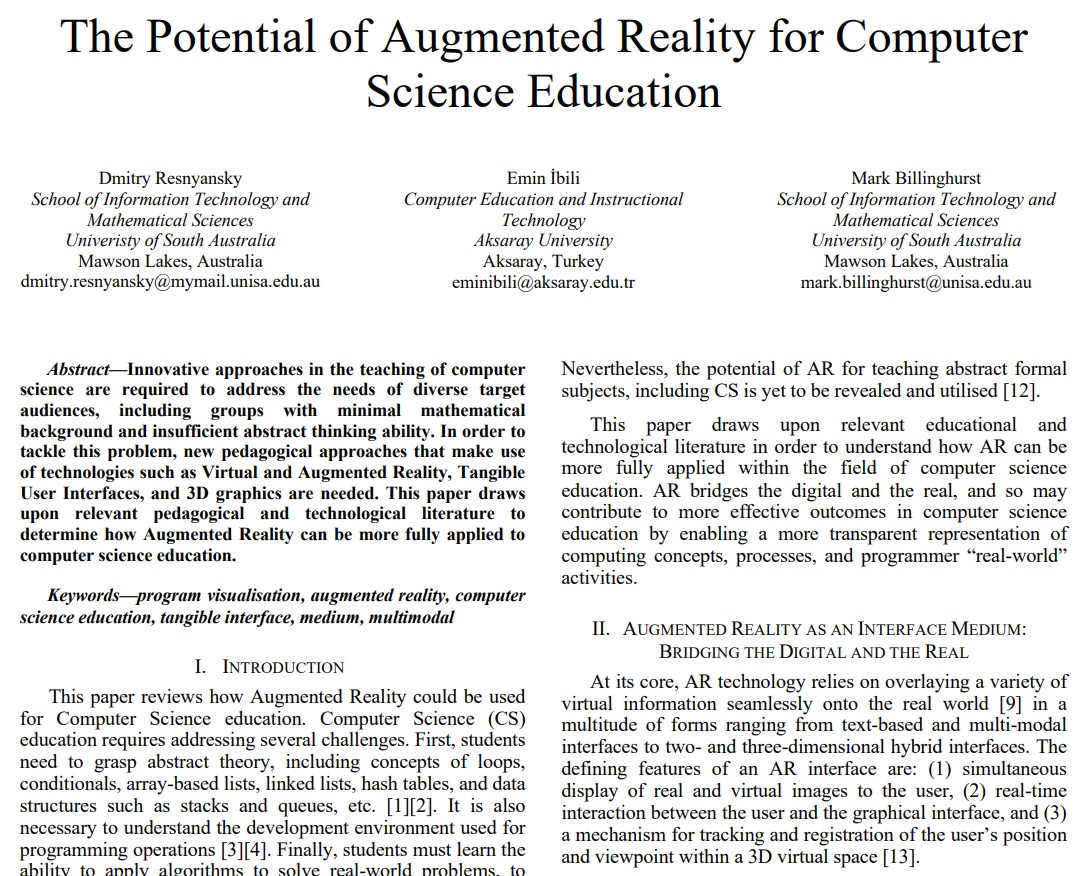
The Potential of Augmented Reality for Computer Science Education
Resnyansky, D., İbili, E., & Billinghurst, M.Resnyansky, D., İbili, E., & Billinghurst, M. (2018, December). The Potential of Augmented Reality for Computer Science Education. In 2018 IEEE International Conference on Teaching, Assessment, and Learning for Engineering (TALE) (pp. 350-356). IEEE.
@inproceedings{resnyansky2018potential,
title={The Potential of Augmented Reality for Computer Science Education},
author={Resnyansky, Dmitry and {\.I}bili, Emin and Billinghurst, Mark},
booktitle={2018 IEEE International Conference on Teaching, Assessment, and Learning for Engineering (TALE)},
pages={350--356},
year={2018},
organization={IEEE}
}Innovative approaches in the teaching of computer science are required to address the needs of diverse target audiences, including groups with minimal mathematical background and insufficient abstract thinking ability. In order to tackle this problem, new pedagogical approaches as needed, such as using new technologies such as Virtual and Augmented Reality, Tangible User Interfaces, and 3D graphics. This paper draws upon relevant pedagogical and technological literature to determine how Augmented Reality can be more fully applied to computer science education. -

An assessment of geometry teaching supported with augmented reality teaching materials to enhance students’ 3D geometry thinking skills
Emin İbili, Mevlüt Çat, Dmitry Resnyansky, Sami Şahin & Mark Billinghurstİbili, Emin, et al. "An assessment of geometry teaching supported with augmented reality teaching materials to enhance students’ 3D geometry thinking skills." International Journal of Mathematical Education in Science and Technology 51.2 (2020): 224-246.
@article{ibili2020assessment,
title={An assessment of geometry teaching supported with augmented reality teaching materials to enhance students’ 3D geometry thinking skills},
author={{\.I}bili, Emin and {\c{C}}at, Mevl{\"u}t and Resnyansky, Dmitry and {\c{S}}ahin, Sami and Billinghurst, Mark},
journal={International Journal of Mathematical Education in Science and Technology},
volume={51},
number={2},
pages={224--246},
year={2020},
publisher={Taylor \& Francis}
}The aim of this research was to examine the effect of Augmented Reality (AR) supported geometry teaching on students’ 3D thinking skills. This research consisted of 3 steps: (1) developing a 3D thinking ability scale, (ii) design and development of an AR Geometry Tutorial System (ARGTS) and (iii) implementation and assessment of geometry teaching supported with ARGTS. A 3D thinking ability scale was developed and tested with experimental and control groups as a pre- and post-test evaluation. An AR Geometry Tutorial System (ARGTS) and AR teaching materials and environments were developed to enhance 3D thinking skills. A user study with these materials found that geometry teaching supported by ARGTS significantly increased the students’ 3D thinking skills. The increase in average scores of Structuring 3D arrays of cubes and Calculation of the volume and the area of solids thinking skills was not statistically significant (p > 0.05). In terms of other 3D geometric thinking skills’ subfactors of the scale a statistically significant difference was found in favour of the experimental group in pre-test and post-test scores (p < 0.05). The biggest difference was found on ability to recognize and create 3D shapes (p < 0.01).The results of this research are particularly important for identifying individual differences in 3D thinking skills of secondary school students and creating personalized dynamic intelligent learning environments. -
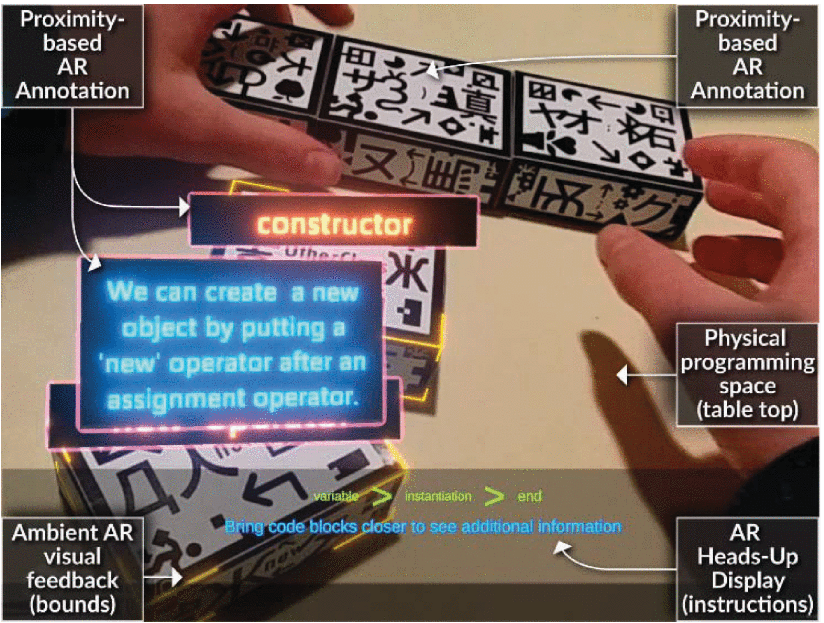
Augmented reality-supported tangible gamification for debugging learning
Dmitry ResnyanskyResnyansky, D. (2020, December). Augmented reality-supported tangible gamification for debugging learning. In 2020 IEEE International Conference on Teaching, Assessment, and Learning for Engineering (TALE) (pp. 377-383). IEEE.
@INPROCEEDINGS{9368410,
author={Resnyansky, Dmitry},
booktitle={2020 IEEE International Conference on Teaching, Assessment, and Learning for Engineering (TALE)},
title={Augmented Reality-Supported Tangible Gamification for Debugging Learning},
year={2020},
volume={},
number={},
pages={377-383},
doi={10.1109/TALE48869.2020.9368410}}
Innovative technologies such as Augmented Reality (AR) and Virtual Reality, tangible user interfaces (TUIs), computer games, robotics and microprocessors have seen an interest within educational research due to their potential for fostering active learning in and outside the classroom. This paper aims to explore the affordances of AR and TUIs as mediums of instruction to address the problem of teaching and learning text-based computer languages, computer science concepts, and programming skills such as debugging. It presents parallels between the technology-supported learning and the active, scaffolded narrative entertainment experience in videogames, and suggests a conceptual framework for the design of learning environments for programming and debugging by using AR and tangible interaction to support scaffolding. -
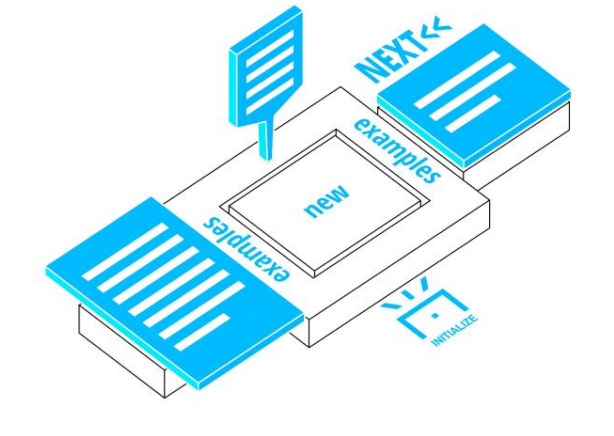
An AR/TUI-supported Debugging Teaching Environment
Dmitry Resnyansky , Mark Billinghurst , Arindam DeyResnyansky, D., Billinghurst, M., & Dey, A. (2019, December). An AR/TUI-supported debugging teaching environment. In Proceedings of the 31st Australian Conference on Human-Computer-Interaction (pp. 590-594).
@inproceedings{10.1145/3369457.3369538,
author = {Resnyansky, Dmitry and Billinghurst, Mark and Dey, Arindam},
title = {An AR/TUI-Supported Debugging Teaching Environment},
year = {2020},
isbn = {9781450376969},
publisher = {Association for Computing Machinery},
address = {New York, NY, USA},
url = {https://doi.org/10.1145/3369457.3369538},
doi = {10.1145/3369457.3369538},
abstract = {This paper presents research on the potential application of Tangible and Augmented Reality (AR) technology to computer science education and the teaching of programming in tertiary settings. An approach to an AR-supported debugging-teaching prototype is outlined, focusing on the design of an AR workspace that uses physical markers to interact with content (code). We describe a prototype which has been designed to actively scaffold the student's development of the two primary abilities necessary for effective debugging: (1) the ability to read not just the code syntax, but to understand the overall program structure behind the code; and (2) the ability to independently recall and apply the new knowledge to produce new, working code structures.},
booktitle = {Proceedings of the 31st Australian Conference on Human-Computer-Interaction},
pages = {590–594},
numpages = {5},
keywords = {tangible user interface, tertiary education, debugging, Human-computer interaction, augmented reality},
location = {Fremantle, WA, Australia},
series = {OzCHI '19}
}This paper presents research on the potential application of Tangible and Augmented Reality (AR) technology to computer science education and the teaching of programming in tertiary settings. An approach to an AR-supported debugging-teaching prototype is outlined, focusing on the design of an AR workspace that uses physical markers to interact with content (code). We describe a prototype which has been designed to actively scaffold the student's development of the two primary abilities necessary for effective debugging: (1) the ability to read not just the code syntax, but to understand the overall program structure behind the code; and (2) the ability to independently recall and apply the new knowledge to produce new, working code structures. -
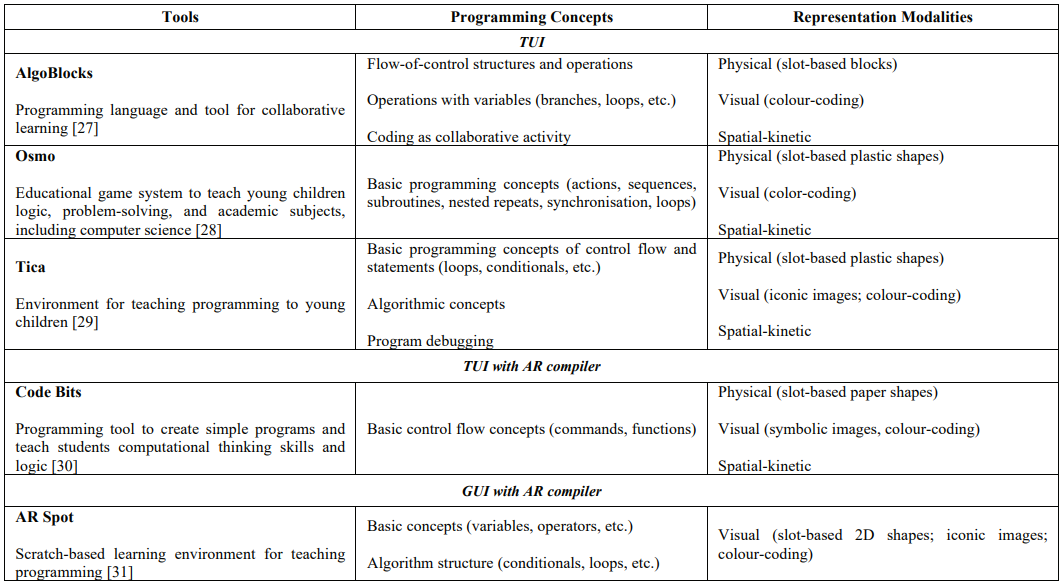
The potential of augmented reality for computer science education
Dmitry Resnyansky; Emin İbili; Mark BillinghurstResnyansky, D., Ibili, E., & Billinghurst, M. (2018, December). The potential of augmented reality for computer science education. In 2018 IEEE International Conference on Teaching, Assessment, and Learning for Engineering (TALE) (pp. 350-356). IEEE.
@INPROCEEDINGS{8615331,
author={Resnyansky, Dmitry and İbili, Emin and Billinghurst, Mark},
booktitle={2018 IEEE International Conference on Teaching, Assessment, and Learning for Engineering (TALE)},
title={The Potential of Augmented Reality for Computer Science Education},
year={2018},
volume={},
number={},
pages={350-356},
doi={10.1109/TALE.2018.8615331}}
Innovative approaches in the teaching of computer science are required to address the needs of diverse target audiences, including groups with minimal mathematical background and insufficient abstract thinking ability. In order to tackle this problem, new pedagogical approaches that make use of technologies such as Virtual and Augmented Reality, Tangible User Interfaces, and 3D graphics are needed. This paper draws upon relevant pedagogical and technological literature to determine how Augmented Reality can be more fully applied to computer science education.


